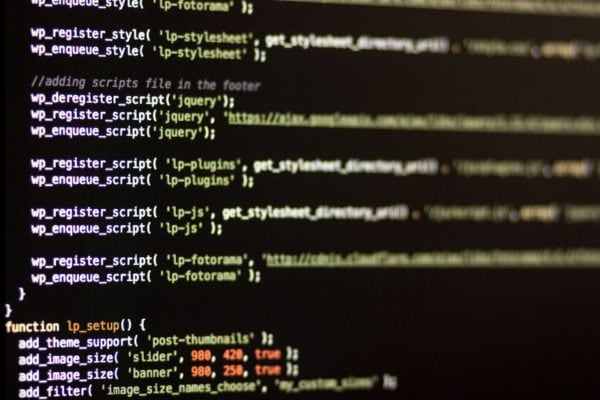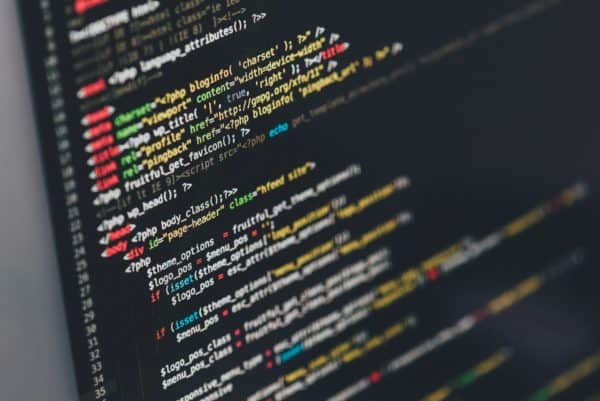Computer programming, often simply referred to as coding, is the process of creating software by writing instructions that a computer can execute. It’s a critical skill in the modern world, driving everything from simple mobile apps to complex systems that manage global networks. This article delves into the core aspects of computer programming, its importance, various programming languages, and the future of this ever-evolving field.
The Importance of Computer Programming

In today’s digital age, computer programming is more important than ever. It underpins the technology that powers our daily lives, from the smartphones we use to the cars we drive and the websites we visit. Programming enables innovation and efficiency, allowing businesses to automate tasks, analyze large datasets, and create new products and services that were previously unimaginable.
The demand for skilled programmers continues to grow as technology advances. According to the U.S. Bureau of Labor Statistics, employment in computer and information technology occupations is projected to grow much faster than the average for all occupations. This growth is driven by the need for new applications, cybersecurity measures, and data management solutions.
Core Concepts in Computer Programming
At its core, programming involves writing code that a computer can understand and execute. This code is written in programming languages, which are sets of instructions and rules that dictate how to perform specific tasks. The key components of programming include:
- Syntax: The set of rules that defines the combinations of symbols that are considered to be correctly structured programs in a language. Syntax varies between languages and is crucial for ensuring the code can be executed.
- Algorithms: Step-by-step procedures or formulas for solving problems. Algorithms are essential in programming as they provide a clear set of instructions for the computer to follow.
- Data Structures: Ways of organizing and storing data so that it can be accessed and modified efficiently. Common data structures include arrays, linked lists, stacks, and queues.
- Control Structures: Constructs that control the flow of execution in a program, such as loops (for, while) and conditionals (if, else).
- Debugging: The process of identifying and fixing errors or bugs in the code. Debugging is a critical skill for programmers, as even small errors can cause significant issues.
Also Read: What Makes the Best Online Coding Classes So Great?
Popular Programming Languages
There are hundreds of programming languages, each with its own strengths and use cases. Some of the most popular and widely used languages include:
- Python: Known for its simplicity and readability, Python is a versatile language used in web development, data science, artificial intelligence, and more. Its extensive libraries and supportive community make it an excellent choice for beginners and professionals alike.
- JavaScript: The language of the web, JavaScript is essential for front-end development. It allows developers to create interactive and dynamic web pages. With the rise of frameworks like Node.js, JavaScript is also used for back-end development.
- Java: A robust, object-oriented language used in a wide range of applications, from web development to mobile apps. Its platform independence, thanks to the Java Virtual Machine (JVM), makes it a popular choice for enterprise solutions.
- C++: An extension of the C language, C++ is known for its performance and efficiency. It’s commonly used in game development, system software, and applications requiring real-time processing.
- Ruby: Known for its elegant syntax and ease of use, Ruby is often used in web development, particularly with the Ruby on Rails framework. It’s favored for its flexibility and productivity.
The Future of Computer Programming

As technology continues to advance, so does the field of computer programming. Several trends are shaping the future of programming, including:
- Artificial Intelligence and Machine Learning: AI and machine learning are revolutionizing how we interact with technology. Programming languages like Python and R are at the forefront of this revolution, providing the tools needed to develop intelligent systems.
- Quantum Computing: While still in its early stages, quantum computing promises to solve problems that are currently intractable for classical computers. New programming languages and paradigms will be required to harness the power of quantum processors.
- Low-Code and No-Code Platforms: These platforms enable individuals with little or no programming experience to create applications through graphical interfaces and pre-built templates. While they won’t replace traditional programming, they will democratize software development.
- Blockchain and Cryptography: As blockchain technology matures, programming for decentralized applications and smart contracts is becoming increasingly important. Languages like Solidity are specifically designed for these tasks.
- Cybersecurity: With the rise of cyber threats, secure coding practices and the development of robust security measures are critical. Programming languages and tools that emphasize security will become more prevalent.
Conclusion
Computer programming is both an art and a science. It requires creativity to design elegant solutions and precision to implement them correctly. As the backbone of modern technology, programming will continue to evolve, driving innovation and shaping the future. Whether you’re a seasoned developer or just starting, understanding the fundamentals of programming and staying abreast of emerging trends is essential for success in this dynamic field.
 Gearfuse Technology, Science, Culture & More
Gearfuse Technology, Science, Culture & More


